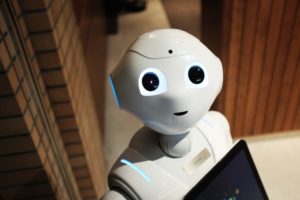Goldilocks and the three steps to understanding machine learning

It’s a hot topic lately, but for many, machine learning is still a bit of a puzzle. This post looks at the key components, debugging and demystifying what is often seen as an overly technical concept, using the analogy of Goldilocks and the Three Bears to offer some practical insights into how it all actually works.
Machine learning: what is it exactly?
Creating a machine learning program is thought of as tremendously technical and exceedingly complex, and sometimes, it is. Generally, the difficulty is found in the parameter selection, program debugging, and the creativity and ingenuity required to create a highly accurate program.
But contrary to popular belief, the brain work behind this theory isn’t as hard as it sounds. At its core, machine learning is essentially trial and error.
Making sense of machine learning in 3 simple steps
Goldilocks and the Three Bears. This might seem a little strange, but in practice it can help to break up, and to simplify this unnecessarily complicated phenomenon. Let’s take the example of the three bowls of porridge.
- First, Goldilocks tried one bowl of porridge, but her burning tongue indicated that it was too hot.
- The logical move was to then try a cooler porridge, but the horrible texture taste indicated that it was too cold.
- Lastly, Goldilocks tried the porridge in the middle bowl and it was delicious, indicating that the temperature was “just right”.
The various "types" of machine learning explained

This, in a nutshell, is the basis for reinforcement learning; whereby a machine picks an action and receives positive or negative feedback. This method has been used to train machines to play games, control robotic arms and to program self-driving cars – the latter having the obvious negative feedback reinforcement: do not crash.
Another common type of machine learning is supervised learning. In this case, the machine is given example data to train on. So, for example, much like Matilda’s Ms Trunchbull forcing a pupil to eat a whole chocolate cake, we might give Goldilocks one hundred bowls of porridge. After burning her tongue on all the bubbling bowls, and wincing in disgust at all the cold, gloopy porridge, she would work out that the bowl with the perfect temperature will be steaming, but not bubbling or gloopy.
The end goal
In practice, a machine takes an input, makes a prediction of the output, looks at how far out this prediction is from the actual answer and adjusts its parameters. This process is often repeated millions of times to ensure there is as little error as possible. To finish, let’s turn our minds back to the children’s story analogy. If Goldilocks was correctly programmed, she’d go straight for the perfect porridge. With enough iterations, she’d probably squeeze in a quick power nap on the perfect bed, then re-make it and cover her tracks so they’d never even know she was there. Genius!
References:
https://medium.freecodecamp.org/an-introduction-to-reinforcement-learning-4339519de419
https://machinelearningmastery.com/supervised-and-unsupervised-machine-learning-algorithms/
http://www.scholarpedia.org/article/Reinforcement_learning/
https://www.sas.com/en_gb/insights/analytics/machine-learning.html






